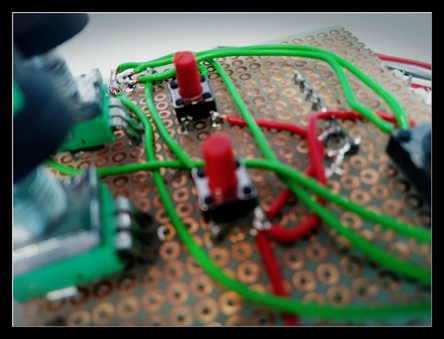Sound synthesis using virtual-acoustic instruments
The increase in computing power now allows real-time implementations of physical models, including complex, nonlinear phenomena that are vital for producing musically interesting sounds. However, even though such models are used by contemporary composers, there have been no structured attempts to establish a performance and composition framework based on physical modelling. This project aims to bridge this gap between scientific developments in the area of physics-based synthesis and artistic performance by triggering a cooperation between engineers, computer scientists, composers and performers.
The objective is to design an interface suitable for composers and performers of electroacoustic music, while conforming with the restrictions of computational efficiency and numerical accuracy that stem from the physical model formulation. In most existing physics-based synthesis applications, the user is presented with countless possibilities of fine-tuning model parameters in order to generate the “desired” sound. These are usually tunable using knobs or sliders, without offering any intuitive feedback over the physical alteration of the system. Such applications appear in the form of plugins for existing software (such as Ableton Live, Max/MSP, CDP etc.) or stand-alone code (written in C, Matlab or domain-specific languages, such as Csound or Faust). Even though all model capabilities are available to the user via such code, there is minimal effort in order to provide an interface that, besides being functional, may enable seamless integration to music performance, usability beyond a limited amount of compositions and concerts, and durability subject to scientific advances and performance requirements. Furthermore, suitable controllers for each fine-tunable model parameter need to be devised, since these parameters may significantly vary in nature – considering, for example, wind instruments, different controllers are envisaged for fine-tuning blowing pressure, finger forces, and embouchure control. To this end, in collaboration with electroacoustic composers and performers, a novel interface will be conceived based on the desires, performance requirements and commonly available infrastructure of all involved parties.
Funded by the mdw Call for Artistic Research Projects, a University scheme to support pilot projects in the field of artistic research.

References
- A. Hofmann, V. Chatziioannou, S. Schmutzhard, G. Erdoğan and A. Mayer. The Half-Physler: An oscillating real-time interface to a tube resonator model. In Proc. NIME19, 2019.
- A. Hofmann, S. Schmutzhard, M. Pàmies-Vilà, G. Erdogan and V. Chatziioannou. An opcode implementation of a finite difference viscothermal time-domain model of a tube resonator for wind instrument simulations. In Proc. Fifth International Csound Conference, 2019.
- V. Chatziioannou, A. Hofmann and S. Schmutzhard. A real-time physical model to simulate player control in woodwind instruments. in Proc. International Symposium on Musical Acoustics, 2019.
- V. Chatziioannou and A. Hofmann. Physics-based analysis of articulatory player actions in single-reed woodwind instruments. Acta Acustica united with Acustica, 101(2):292--299, 2015. http://dx.doi.org/10.3813/AAA.918827